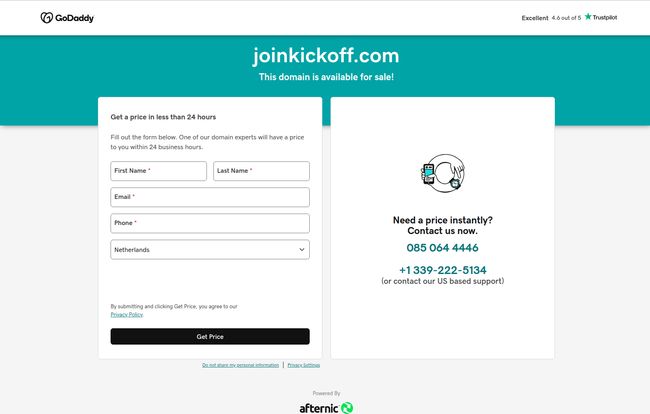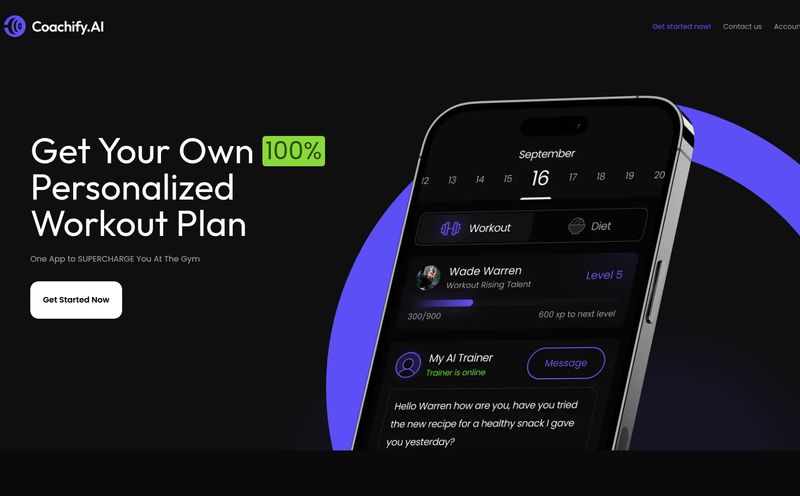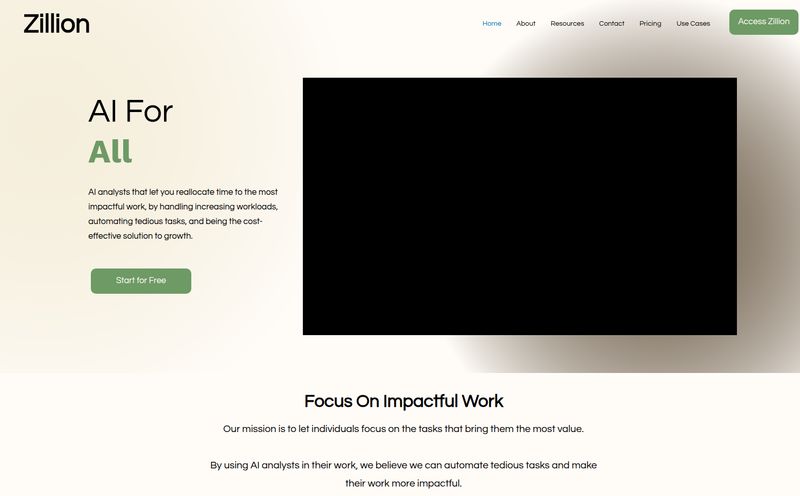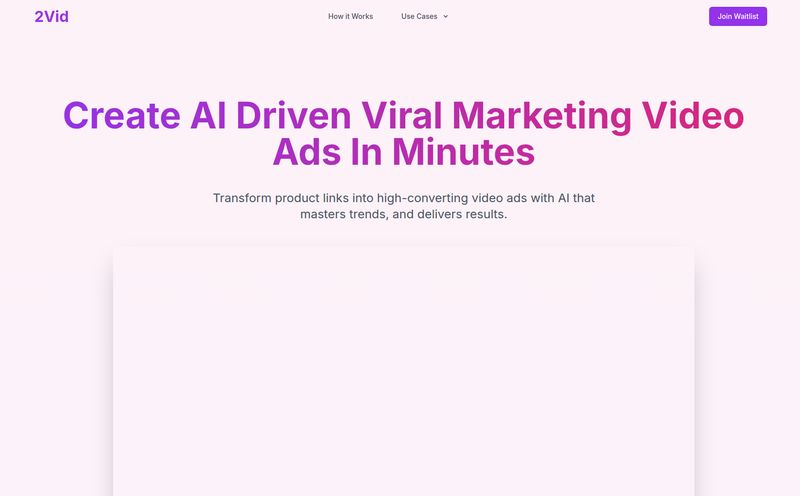How many hours have you lost to the endless email chain of “What time works for you?” It’s a special kind of professional purgatory. For years, tools like Calendly have been the go-to fix, and don’t get me wrong, they solved a huge problem. They brought sanity to our calendars. But as our needs grew more complex, I couldn't help but feel... trapped. Trapped in a walled garden with their branding, their feature set, and their rules.
I’ve always been a tinkerer, someone who wants to peek under the hood. If a tool doesn’t let me customize it to fit my exact workflow, I get antsy. That’s why when I first stumbled upon Cal.com, it felt different. It wasn't just another pretty scheduling app; it was billed as “scheduling infrastructure.” That phrase stuck with me. It hints at something bigger. Something you build on, not just something you use. And after spending a good amount of time with it, I can tell you it’s one of the most interesting projects in the productivity space right now.
What Exactly is Cal.com? (And Why Should You Care?)
So, what does “scheduling infrastructure” even mean? Here’s the best analogy I can come up with: most scheduling tools are like renting a furnished apartment. It's convenient, it's ready to go, but you can’t knock down a wall or repaint the kitchen. Cal.com is like being given the blueprints and the deed to the entire building. You can use one of their pre-built apartments (their SaaS offering) or you can build your own custom penthouse from the ground up (the self-hosted version).
At its heart, Cal.com is an open-source project. This is the big differentiator. It means the core code is available for anyone to see, modify, and use. For a privacy-conscious business or a developer building a custom application, this is a massive deal. It means you have ultimate control over your data and functionality. You're not just a user; you're an owner.

Visit Cal.com
The Features That Actually Matter
A long feature list can be deceiving. What matters is how those features solve real problems. Cal.com has a few aces up its sleeve that go beyond just picking a time slot.
The Magic of Open-Source Customization
This is the main event. Because it's open-source, you can completely white-label the entire experience. Remove all Cal.com branding and make it look like your tool. I once worked with a client who needed a scheduling system built directly into their SaaS platform, and the off-the-shelf solutions were a nightmare of compromises. With Cal.com, you could literally build that integration from the ground up using their code. For agencies and developers, this is gold. You can host it on your own servers, which is a huge win for data compliance in industries like healthcare or finance.
Let's Talk About Cal.ai: Your AI Scheduling Assistant
Okay, the term 'AI' is thrown around so much it’s almost lost all meaning. But what Cal.com is doing here is genuinely practical. Cal.ai isn't just about finding an open slot. You can tell it things in plain English like, “Find me a 30 minute slot with Sarah next week, but avoid Monday mornings.” It’ll parse that and figure it out. They even have AI Phone Agents that can take calls and book appointments for you. It's a little bit sci-fi, a little bit amazing, and definitely points to where scheduling is headed. Is it perfect? No, but its a fascinating glimpse into a future with less admin work.
A Developer's Playground: The API and App Store
If you're not a developer, you might glaze over at the mention of an 'API,' but stick with me. The Unified Calendar API is huge. It lets you connect to Google Calendar, Outlook, and others through one single point. For anyone building software that needs to interact with calendars, this saves a monumental amount of work. Then there's the App Store. Just like with WordPress or Shopify, this is a marketplace for add-ons and integrations. Need to take payments via Stripe for a consultation? There’s an app for that. Want to connect to a specific video conferencing tool? It's probably in there. This ecosystem approach is smart, and ensures the platform can grow without the core team having to build every single feature themselves.
The Good, The Bad, and The Complicated: A Real-World Look
No tool is perfect, and its important to be straight about that. My experience with Cal.com has been overwhelmingly positive, but it’s not for everybody or every situation.
On the upside, the freedom is just incredible. The ability to self-host gives you total data sovereignty. The customization options mean you can bend the tool to your will, not the other way around. And the developer-friendly nature, with the powerful API and growing app ecosystem, makes it a platform with a very high ceiling. For businesses, the routing features are fantastic—you can automatically assign meetings to the next available team member, which is great for sales or support teams.
Now for the potential headaches. Let's be real: if you want to self-host, you need some technical chops. This isn't a one-click install for the technically faint of heart. While their documentation is good, you'll be more comfortable if you know your way around a server. There can also be a learning curve for the advanced customization. And while the core is open-source, many of the more advanced, team-oriented features are part of their paid plans. This isn't a knock against them—people need to get paid for their work—but it's something to be aware of. Open source doesn't always mean free of cost.
So, How Much Does Cal.com Cost?
This is always the bottom-line question, isn't it? Cal.com has a pretty fair and transparent pricing model that scales with your needs. I'd recommend checking their official pricing page for the latest details, but here’s the general breakdown:
- Individuals (Free): This plan is incredibly generous. You get unlimited event types, all the core apps and API access. For a solopreneur or freelancer, this is a fantastic starting point.
- Teams ($15/user/month): This is for growing businesses. It adds features like round-robin scheduling, managed event types for your team, and priority support.
- Platform & Enterprise (Custom Pricing): This is the “build your own building” option. It includes full white-labeling, HIPAA and SOC 2 compliance, and dedicated support. This is for serious businesses that want to integrate Cal.com as a core part of their infrastructure.
Honestly, the free tier is so capable that it puts many paid competitors to shame.
Who is Cal.com Actually For?
I see Cal.com fitting a few key profiles perfectly:
The Tech-Savvy Solopreneur: You want a powerful, professional scheduler without paying a monthly fee. The free plan is for you.
The Growing Business or Agency: You need to manage scheduling across a team and want a white-labeled solution for your clients. The Teams or Platform plans are your sweet spot.
The Startup Founder/Developer: You're building a product that requires a scheduling component. The API and open-source nature of Cal.com will save you thousands of hours of development time.
The Enterprise: You have strict security, compliance, and branding requirements. The ability to self-host and fully customize the platform is exactly what you need.
Cal.com vs. The World (Calendly, SavvyCal, etc.)
How does it stack up against the big names? If all you need is a simple, no-fuss link to let people book a time with you, Calendly is still a fine choice. It's the household name for a reason. But the comparison isn't really apples-to-apples. Calendly is a product. Cal.com is a platform.
If you've ever felt limited by Calendly, if you've ever wished you could change just one little thing about how it works, or if the idea of building your own integrations excites you, then Cal.com is calling your name. It's for people who don't just want to use a service, but want to shape it.
Frequently Asked Questions
Is Cal.com completely free to use?
Yes and no. The core software is open-source and free, meaning you can download it and host it yourself at no cost from Cal.com. They also offer a very generous free SaaS plan for individuals. However, for advanced team features, white-labeling, and dedicated support, you'll need one of their paid plans.
Do I need to be a developer to use Cal.com?
Not at all! You can sign up for their hosted SaaS version and use it just like any other scheduling tool, no coding required. The developer-focused features are there if you need them, but they don't get in the way of the core, user-friendly scheduling experience.
How does the Cal.ai assistant actually work?
It uses natural language processing (NLP) to understand scheduling requests written in plain text. You can email it or message it, and it will interpret the request, check your calendar for availability, and coordinate with the other person to find a time that works for everyone, then book the meeting. It's designed to mimic a human assistant.
Can I really host Cal.com on my own server?
Absolutely. This is one of its biggest strengths. If you have the technical knowledge to set up a web application (or are willing to learn), you can run the entire platform on your own infrastructure for maximum privacy and control.
What are some key integrations Cal.com supports?
Through its App Store, it supports a ton of popular tools. For video, there's Zoom, Google Meet, and more. For payments, there's Stripe. It also connects with Zapier, which opens up thousands of other automation possibilities. And of course, it has deep integrations with all major calendar providers like Google, Outlook/Office 365, and Apple Calendar.
Is Cal.com better than Calendly?
"Better" is subjective. If you need simple, fire-and-forget scheduling, Calendly might be easier to start with. If you value customization, control over your data, developer access, and want a platform that can grow with your business's complexity, then in my opinion, Cal.com is far superior.
My Final Thoughts on Cal.com
After all is said and done, Cal.com feels like the future of scheduling. It’s a move away from closed, one-size-fits-all products toward open, flexible platforms that empower users. It respects the need for both simplicity and complexity, offering easy-to-use hosted plans alongside a powerful, self-hostable, open-source core.
It’s not just a tool; it’s a toolkit. It’s an exciting project that I’ll be keeping a close eye on, and if you’ve ever felt constrained by your current scheduler, I think you should too. It just might be the last scheduling tool you ever need to look for.



